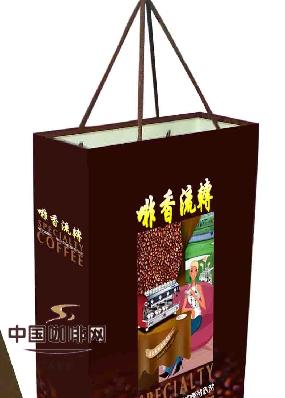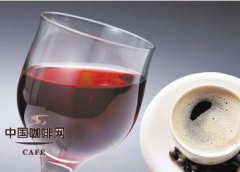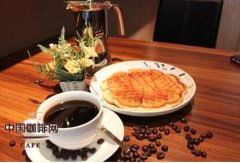Comparison of various Coffee varieties in Fine Coffee

Arabica species VS Robsta species
As a crop, tree species and planting environment are the basic factors for the good circulation of coffee beans. At present, the coffee beans in circulation in the coffee market are Arabica (Coffea Arabica) or Robusta (Coffea Robusta). Generally speaking, Arabica coffee trees have fragile vitality, low resistance to diseases and insect pests, high requirements for planting environment, low caffeine content, high acidity and complexity. Robusta coffee trees, on the other hand, can grow at lower elevations, have strong disease resistance and vitality, have a high caffeine content (more than twice that of Arabica) and taste less rich than Arabica beans. but it has a good consistency.
Boutique coffee is almost always Arabica or Arabica derivative, and the only thing that allows Robusta to grow coffee beans and boutique coffee is Espresso (espresso). In Espresso's comprehensive coffee bean formula, a small amount of robusta coffee beans with a high level of treatment are usually added to add sweetness and consistency to the formula.
Boutique coffee VS commercial coffee
The concept of boutique coffee was first put forward, mainly to make it different from the bulk commercial coffee on the New York futures market. The output of boutique coffee beans is usually very small because they are picky about the growing environment and the treatment process is time-consuming and labor-consuming.
In order to meet the needs of the bulk commercial market, some Arabica coffee beans are planted in large areas at low elevations, regardless of maturity and mass harvest, and are not so exquisite in raw bean treatment, transportation and baking. and it is very likely that fertilizers and pesticides will be used to increase production and resistance to diseases and insect pests. These Arabica and Robusta coffee beans are usually the main ingredients for cheap canned coffee beans, powdered coffee, instant coffee and cheap coffee in some cafes or offices.
In terms of flavor, the biggest difference between the two is that "bulk commercial beans taste monotonous, slightly bitter and must be sweetened in order to be tasted, while fine beans have an obvious' regional flavor 'and the sour aroma is extremely thick. Adding sugar or cream is like a natural thing" (Han Huaizong's Coffee Science: secret History, boutique and introduction to Baking).
Single coffee VS mixed coffee
Single product coffee (Single-Original) refers to the coffee made from coffee beans from a single producing area and a single harvest season. In order to express the "regional flavor" of different producing areas, boutique coffee is often based on individual products. There is also a form of mixing coffee beans in different harvest seasons or more than two different producing areas, which is called mixed coffee or mixed formula coffee (Blends).
In most cases, the purpose of blending is to obtain a completely new coffee flavor, such as the world's oldest and most famous mocha-Java recipe (Mocha-Java Blend), or to produce a blend of local preferences based on cultural and regional differences. No matter what the purpose of blending is, it is based on the same starting point: to combine different kinds of coffee beans to learn from each other without weakening the flavor. Good blending naturally depends on the formula, which is the magic weapon of coffee manufacturers, and on the other hand, it also depends on the quality of the single coffee beans.
Obviously, individual coffee or mixed coffee is not directly related to whether it is fine coffee or not. And in fact, most of the individual coffees on the market with the same name as boutique coffee are just ordinary cheap coffee beans.
Black coffee VS fancy coffee
Generally speaking, no matter it is a single product or a comprehensive coffee, it is directly drunk without other ingredients after extraction, that is, black coffee (Black Coffee) in the general sense. Although the "regional flavor" of boutique coffee is fascinating, it does not prevent coffee from adding milk, sugar and seasonings such as chocolate, vanilla, cinnamon, mint or whiskey to produce fancy coffee with different styles and full of personality. Fancy coffee has gone far beyond the characteristics of coffee producing areas because of its flavor characteristics. In order to ensure the integrity and stability of coffee flavor, comprehensive coffee is generally used as the base.
Espresso espresso
The "espresso" and "American coffee" on the menu of some cafes can be collectively referred to as espresso or Espresso. Originally from the high-temperature steam extraction technology invented by the Italians, it can now be said that it is a mainstream coffee genre with its own system of raw bean blending, baking, extraction and life culture.
The complete definition of Espresso is that "mixed coffee beans roasted at a depth of 7 grams are ground into extremely fine coffee powder, and 30 milliliters of strong coffee liquid is rapidly extracted in a short period of 20 seconds after 9 atmospheric pressure and 90 degrees Celsius steam." Espresso taste thick and smooth, make people taste like "velvet", and sticky will form a lower surface tension, more able to invade the taste buds, so that mellow reverberate in the mouth. The coffee with more water content and lighter made by Espresso coffee machine is called American coffee (Americano).
Espresso is a comprehensive coffee art, it has a complete and independent system in blending, roasting and cooking, which allows people to study it all their lives. With Espresso as the base, milk, caramel, chocolate and milk foam are added to derive classic flavor coffee such as Latte, Cappuccino, Mocha, Macchiato and so on. Nowadays, Italian cafes are popular all over the world, and there are many streets, but whether you can drink a cup of "boutique coffee" has nothing to do with the term Italian coffee or Espresso.
Important Notice :
前街咖啡 FrontStreet Coffee has moved to new addredd:
FrontStreet Coffee Address: 315,Donghua East Road,GuangZhou
Tel:020 38364473
- Prev

Don't drink coffee after drinking. Coffee after drinking should not drink too much.
In fact, if you want to tell whether it is wine or coffee, it only depends on what is the main body. If it is based on wine, coffee can be made into coffee wine by mixing distilled liquor with high alcohol content and strong coffee spices. For example, Mexican Coffee Wine, French Cordial or Italian Corretto, etc. Take coffee as the main body, add flavor enhancement
- Next

Elegant coffee how to enjoy a good cup of coffee
Behavior etiquette: going to a cafe to taste coffee is one of the daily formulas for the French, so it's no big deal. The purpose of going to a cafe is mostly just to chat, so take it easy. But in cafes frequented by high-class people, personal demeanor and clothing are very important. There are some unwritten traditional coffee politeness, which may be important, such as not one.
Related
- Beginners will see the "Coffee pull flower" guide!
- What is the difference between ice blog purified milk and ordinary milk coffee?
- Why is the Philippines the largest producer of crops in Liberia?
- For coffee extraction, should the fine powder be retained?
- How does extracted espresso fill pressed powder? How much strength does it take to press the powder?
- How to make jasmine cold extract coffee? Is the jasmine + latte good?
- Will this little toy really make the coffee taste better? How does Lily Drip affect coffee extraction?
- Will the action of slapping the filter cup also affect coffee extraction?
- What's the difference between powder-to-water ratio and powder-to-liquid ratio?
- What is the Ethiopian local species? What does it have to do with Heirloom native species?

